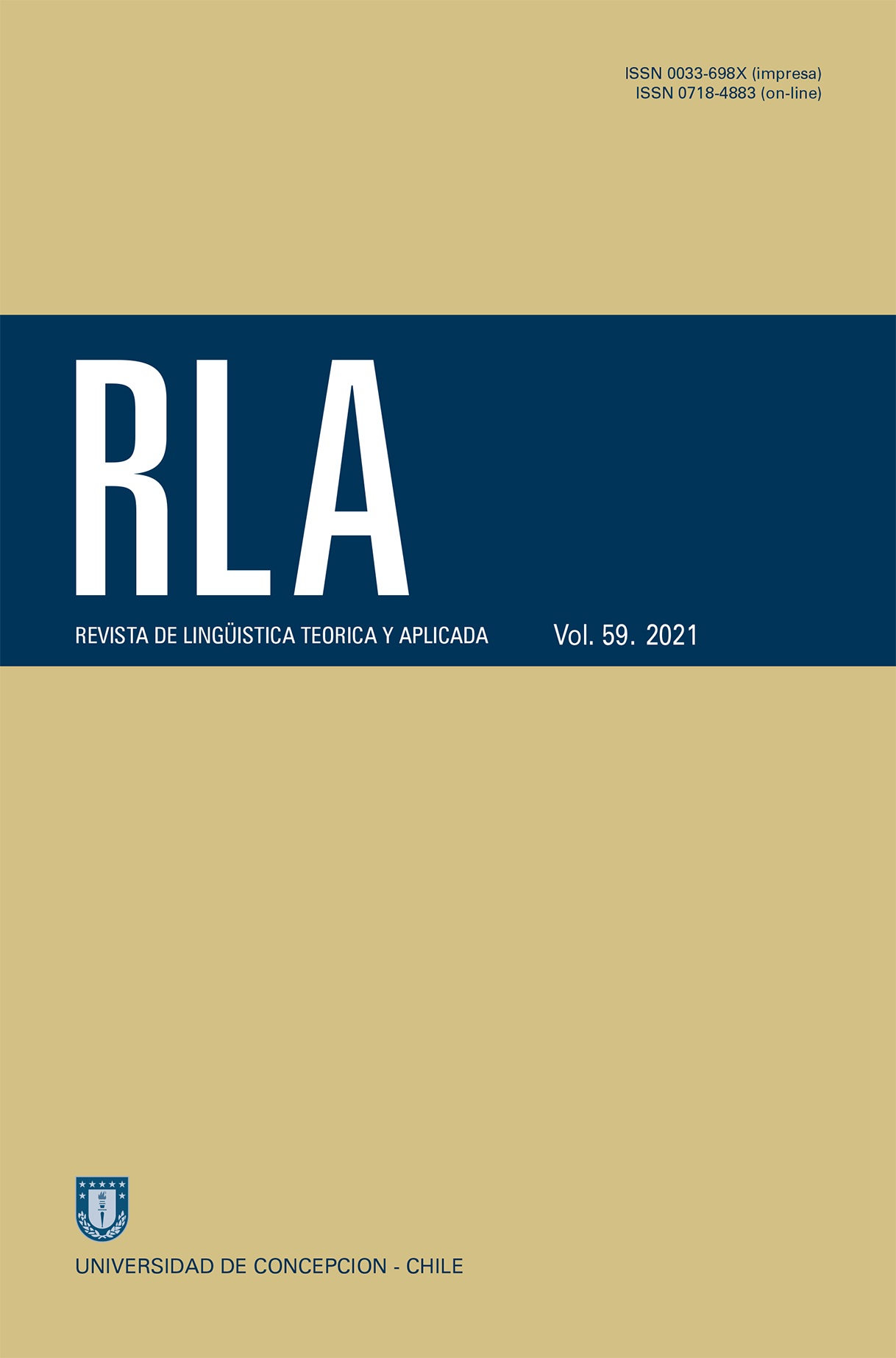INTONATION OF INTERROGATIVE SENTENCES IN NORMAL SPEAKERS AND NON-FLUENT APHASIA PATIENTS: FIRST APPROACH
DOI:
https://doi.org/10.29393/RLA59-8EOMR10008Keywords:
Intonation, interrogative statements, intonational patterns, aphasiaAbstract
The purpose of this paper is to analyze and describe intonational patterns in interrogatives in the Spanish spoken in the urban areas of the Biobío Region of Chile. Spoken samples of normal speakers and individuals diagnosed with 2 variants of non-fluent aphasia were investigated for the current description. The spoken samples were taken from the Spanish Questionnaire (Central Peninsular Spanish Version), adapted for Spanish by Estebas and Prieto (2008) and some unplanned interviews. The sample includes 342 interrogative statements produced by 20 native speakers:10 of them diagnosed with 2 different variants of non-fluent aphasia and 10 individuals with no neurological damage. All of them signed the informed consent. The basis of analysis is the Autosegmental Metrical Theory, known as AM and the intonational transcription system ToBI (Pierrehumbert, 1980; Estebas y Prieto, 2008; Prieto y Roseano, 2010; Hualde y Prieto, 2015). We found that though many intonational patterns are similar to those observed in Santiago de Chile and elsewhere in the Spanish-speaking world, there are some patterns which differ between them. Such differences are considered to be dialectal in nature, as they do not change the meaning of the statement. In the case of non-fluent aphasia patients, large differences were noted concerning the interrogative sentences produced by normal speakers, those that coincide with those already on file from previous studies.
Downloads
Published
How to Cite
Issue
Section
Copyright (c) 2021 Universidad de Concepción

This work is licensed under a Creative Commons Attribution 4.0 International License.







